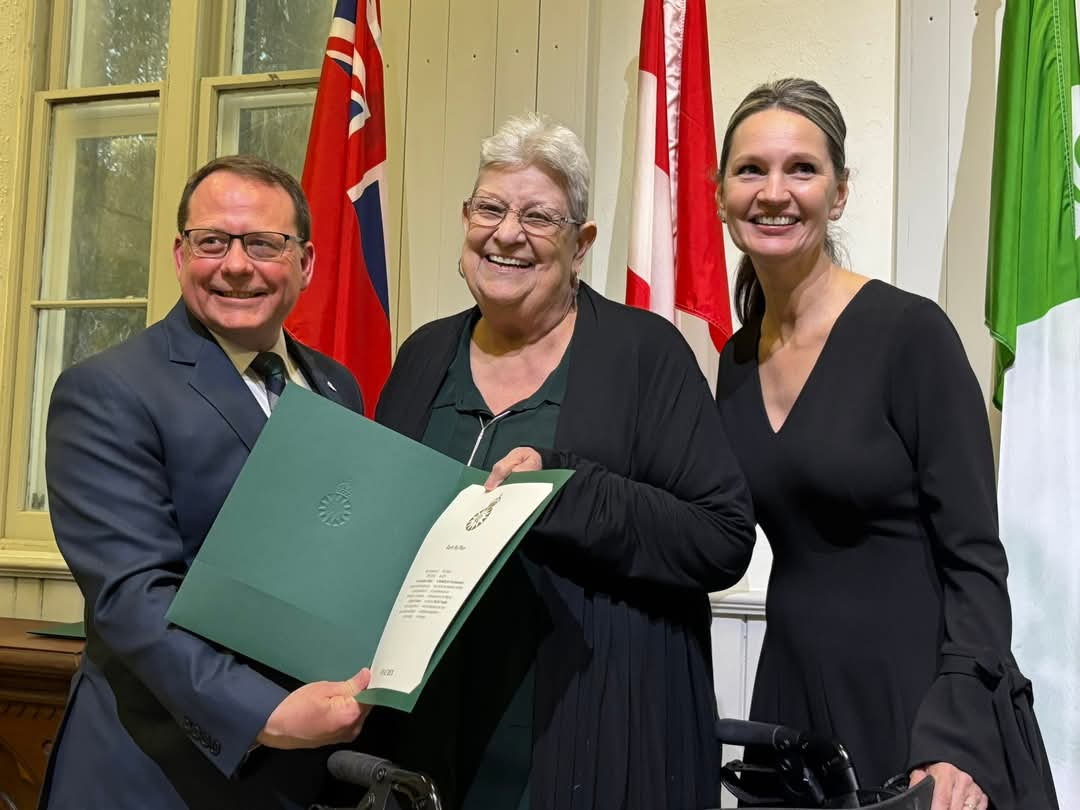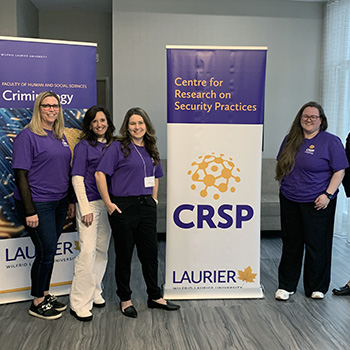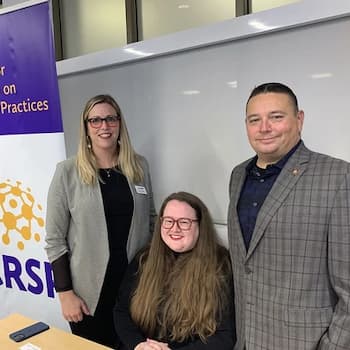Populations
Research in the populations theme examines how security practices impact specific populations (e.g. racialized communities, people experiencing homelessness, migrant workers, asylum seekers, refugees, etc.) to understand how these populations perceive, understand, experience, and internalize security practices. It seeks to uncover and provide insight into the way security practices impact individuals’ ontological security, wellbeing, and perceptions of safety and security.
Current Research Projects
With approximately 35,000 people experiencing homelessness each night homelessness is a growing crisis effecting communities across Canada. However, there are unique challenges in mid-sized cities, where the visibility of homelessness is often a relatively new phenomenon, and the demand by community members to 'do something' comes up against the rights and needs of people experiencing homelessness. Too often police are called to manage the optics of homelessness, particularly in commercial areas. These interventions lead to what are at best band-aid solutions to systemic problems. At worst, they criminalize and further marginalize people experiencing homelessness.
Centre for Research on Security Practices members Dr. Erin Dej and Dr. Carrie Sanders are leading a team of researchers from Wilfrid Laurier University, University of Guelph, and the Centre for Addiction and Mental Health (CAMH) in a project that will interrogate perceptions about people experiencing homelessness as inherently deviant and dangerous, and seek to build a new narrative premised on knowledge sharing and enhancing community resiliency. The SSHRC-funded study, entitled From NIMBY to Neighbour, involves a multi-tiered case study in three mid-size cities in Ontario: Guelph, Cambridge, and Brantford. The project will 1) conduct an environmental scan of promising policy and practice responses to homelessness in Canadian municipalities as well as a media analysis in the three case study cities; 2) employ and adapt an innovative “brokered dialogue methodology” to address contentious issues among stakeholder groups---people with lived experience of homelessness, law enforcement, and community members; and 3) create opportunities for meaningful exchange between divergent groups to foster social inclusion for people experiencing homelessness. Brokered dialogue is ideal for this project because it offers a non-oppositional form of facilitated interviewing designed to engage people with varying degrees of power around factious issues in safe and empowering ways.
Importantly, the Cities of Cambridge and Brantford are partners and have been instrumental in the project design. They will continue to play a direct role in overseeing the project. Their partnership demonstrates their commitment to using research results to inform policies and practices on homelessness and community building. Another key partner on the project, The Canadian Observatory on Homelessness, a non-profit research institute, will use its national platform to ensure that research findings resonate across the country.
From NIMBY to Neighbour began in Fall 2020 and will run to the end of 2023. Ultimately, project results will help make sense of how different groups perceive homelessness, use of space, public safety, and community integration, with the aim of building empathy and community resiliency within and across the case study sites. This collaboration will also lay the groundwork for a broader, long-term research partnership that brings together researchers, municipalities, social service organizations, and people with lived experience of homelessness across Canada.
Completed Research Projects
This project investigates (mis)perceptions of homelessness, crime, and safety among different groups of people in a mid-sized suburban city in British Columbia. The goal of this project is to create a fact-based counter-narrative that both challenges and changes widely held truths about homelessness, crime and safety in this community.
This research has received funding from the British Columbia Ministry of Public Safety and Solicitor General, Office of Crime Reduction and Gang Outreach, Crime Reduction Research Program (CRRP_2018-19_03). The research team on this project consists of Drs. Carrie Sanders, Erin Dej, and Jessica Braimoh and their work is supported by three undergraduate research assistants.
The project involves interviewing a diverse group of stakeholders, each with a relationship to homelessness. Forty-six interviews were conducted with people with lived experience of homelessness, service providers, housed residents, and the police. Data collection was completed in November 2019. Analysis of the interview data has commenced and the research team will be presenting the research results at conferences during 2020.
Street outreach programs (SOPs) connect street-involved or otherwise marginalized community members with supportive services through a range of delivery methods. These can include mobile healthcare, mental health and substance use counselling, and needle exchanges; they can also assist with access to shelter, food, and long-term housing. Since their proactive and client-driven nature promote engagement with individuals who face concurrent barriers to accessing supports, SOPs can mitigate overuse of emergency response systems by providing diversionary options for non-emergency situations, such as 'social disorder' calls for police or acute mental health events. An extensive body of academic and evaluation literature has established the effectiveness of SOPs as catalysts for holistic improvements to social circumstances, including preventing the spread of HIV/AIDs; improved access to counselling services; reductions in charges laid by police; increases in referral actions; and improvements to local perceptions of community safety and fear of crime.
The City of Brantford, a mid-sized municipality in southwestern Ontario, will be piloting an SOP servicing the city's core neighbourhoods. The Brantford Downtown Outreach Team (BDOT) will actively engage street-involved and marginalized individuals, addressing their specified needs. The BDOT is funded by the City and directed by a planning committee that represents a number of local service agencies. A partnership between the City of Brantford and Wilfrid Laurier University has been formed to address this challenge by evaluating the impact of the BDOT on the local community. The project is examining the impact of the BDOT's presence through a mixed-methods evaluation strategy and will mobilize research findings through several media, including a report for the City that will lead to operational adjustments to the service delivery mode. The assessment of the BDOT's impact is heavily reliant on participatory input from a range of stakeholders, including frontline staff, municipal administrators, community representatives, and BDOT clientele. The evaluation will provide critical information needed for evidence-based decision-making and programmatic adaptations so the BDOT optimally supports its clientele.












